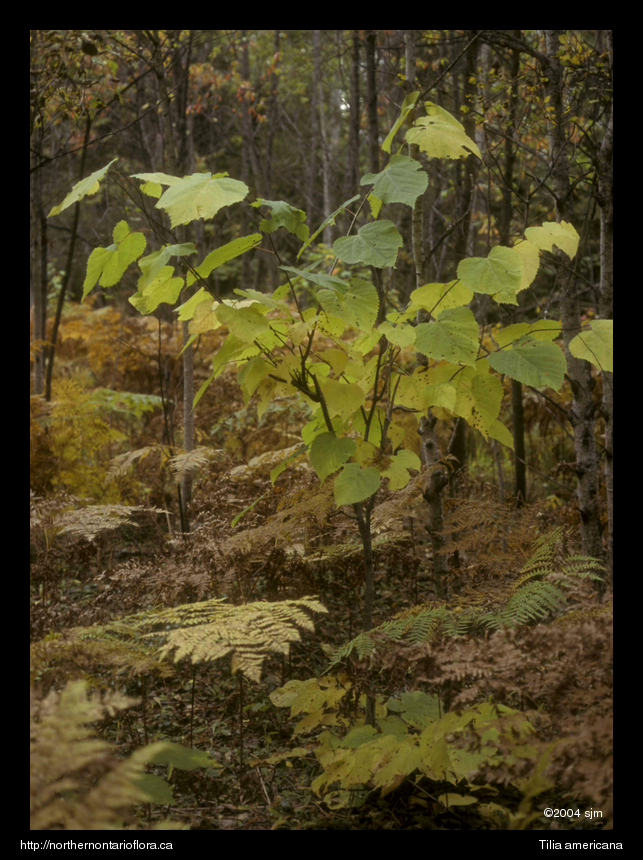
|
Northern Ontario Plant Database 
Plant DescriptionTilia americana L.En: basswood, American basswood, American linden, American lime, whitewood, white basswood
Malvaceae (Mallow Family) General: A tall, deciduous tree, 25–40 m tall, often sprouting from a cut stump and producing multiple stems that develop into a close colony of several trees. Bark gray to brown, furrowed. Twigs greenish- to reddish-brown, smooth (glabrous), zig-zag, the terminal bud false (pseudoterminal); lateral buds ovate, pointed (acute), green to reddish-brown, with 2–3 scales of unequal size (buds asymmetrical); leaf scar semicircular, with 3 bundle trace scars. Leaves: Alternate, simple, pinnately-veined, petiolate. Leaf blades ovate, to 2 dm long; green above, paler beneath; lower surface smooth (glabrous) or with tufts of simple hairs in the axils of the pinnate veins and the midrib; base cordate and unequal, with one side larger than the other (oblique); apex pointed (acute); margins are sharply toothed (serrate). Leaves turn yellow in autumn. Flowers: Bisexual, light yellow, fragrant, in pendant clusters (cymes) of 6–20 flowers; the inflorescence appearing to arise from near the middle of an elongate papery bract, 5–10 cm long (but with the lower portion of the peduncle fused to the bract). Sepals 5, narrow-lanceolate; petals 5, oblanceolate or spatulate, each petal associated with a sterile stamen (staminodium); fertile stamens numerous, arranged in 5 groups; pistil 1. Flowers bloom in early summer, producing copious amounts of nectar; attractive to bees. Fruit: A small, ovoid to globose nutlet, finely hairy, 8–10 mm in diameter, dispersing in clusters with the persistent bract, which aids in wind dispersal. Fruits mature in autumn. Habitat and Range: Rich deciduous forests and river bottoms. A temperate, eastern North American species; extending along the southern boundary of northern Ontario. Internet Images: See the Tilia americana webpage from the Trees of Wisconsin website. Click on the smaller images to view larger, more detailed photos. The Tilia americana webpage from the USDA Silvics of North America website. Back to species list |
||||||||||||||||||||||










